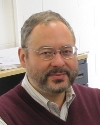NIMBioS Tuesday Seminar Series
In conjunction with the interdisciplinary activities of the National Institute for Mathematical and Biological Synthesis (NIMBioS), a seminar series will be hosted at NIMBioS every other Tuesday at 3:30 p.m. in the NIMBioS Lecture Hall on the 4th floor of 1534 White Ave., Suite 400 Seminar speakers will focus on their research initiatives at the interface of mathematics and many areas of the life sciences. Light refreshments will be served starting at 3 p.m.

Time/Date/Location: 3:30 p.m., Nov. 16, NIMBioS Lecture Hall, 1534 White Ave., Suite 400
Speaker:
Dr. Peter Turchin, Ecology & Evolutionary Biology, Mathematics, Univ. of Connecticut
Topic: The rise of complex human societies as a major evolutionary transition
Abstract:
Multilevel selection is a powerful theoretical framework for addressing these questions. Turchin uses this framework to investigate a major transition in human social evolution, from small-scale egalitarian groups to large-scale hierarchical societies such as states and empires. A key mathematical result in multilevel selection, the Price equation, specifies the conditions concerning the structure of cultural variation and selective pressures that promote evolution of larger-scale societies. Specifically, large states should arise in regions where culturally very different people are in contact, and where interpolity competition - warfare - is particularly intense. Turchin explores the implications of this theoretical result with a spatially explicit agent-based model and tests model predictions with historical data.
Flyer Press release Video interview
NIMBioS
1122 Volunteer Blvd., Suite 106
University of Tennessee
Knoxville,
TN 37996-3410
PH: (865) 974-9334
FAX: (865) 974-9461
Contact NIMBioS


